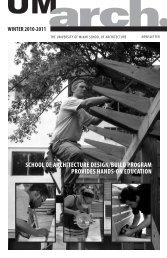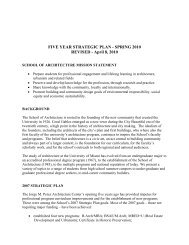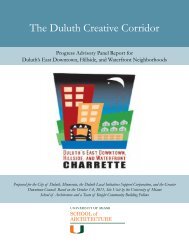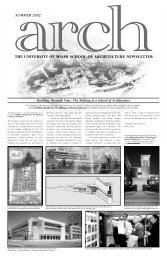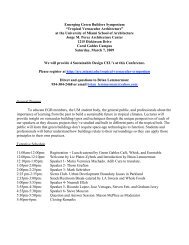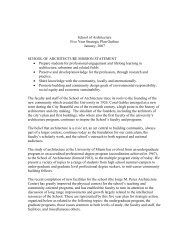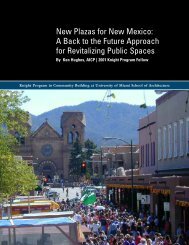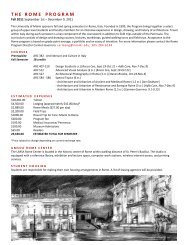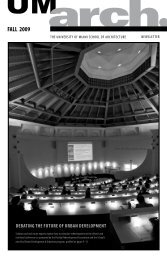Full Report - Knight Program in Community Building
Full Report - Knight Program in Community Building
Full Report - Knight Program in Community Building
You also want an ePaper? Increase the reach of your titles
YUMPU automatically turns print PDFs into web optimized ePapers that Google loves.
HURLEY | THE PUBLIC PROCESS 11Because facilitators and mediators pay explicit attention to develop<strong>in</strong>g groundrules, <strong>in</strong>clud<strong>in</strong>g a decision rule, consensus-build<strong>in</strong>g processes are usually tied veryclosely to a legally required decision-mak<strong>in</strong>g process. In addition, because consensus-build<strong>in</strong>g<strong>in</strong>cludes a step <strong>in</strong> which the group def<strong>in</strong>es the problem or task, thegroup def<strong>in</strong>es the product. The product of a consensus-build<strong>in</strong>g process is often astatement of agreement by all of the stakeholders. Frequently, this statement providesrecommendations to the body with legal decision-mak<strong>in</strong>g authority. F<strong>in</strong>ally, mediatorsand facilitators are tra<strong>in</strong>ed to “test” an agreement, to make sure that all of the partieshave thought through the implications of the recommendation and that the agreementwill be resilient. These three factors mean that consensus-build<strong>in</strong>g processeswork to package an agreement that all parties will actively support.In a charrette, the product of the process is usually def<strong>in</strong>ed by the sponsor andthe designers through the RFP and contract<strong>in</strong>g process. The sponsor may or maynot be explicit about how the charrette fits <strong>in</strong>to a larger decision-mak<strong>in</strong>g process.Even when the sponsor is explicit with the designers about how the charrette fits<strong>in</strong>to the larger decision-mak<strong>in</strong>g process, that connection is not always emphasizedwith the public. Commonly, the products of the charrette comprise plans or regulationsthat the designers recommend that a legal body, usually the City Council,adopt. There is substantial stakeholder <strong>in</strong>put through meet<strong>in</strong>gs and p<strong>in</strong>-up sessionsheld throughout the charrette, but there is not usually an explicit attempt to reachconsensus among all of the stakeholders. Because of the short time frame, the productis not always completely f<strong>in</strong>ished when the charrette ends. All of these factorstogether contribute to charrettes creat<strong>in</strong>g products (plans and regulations) that donot get implemented.Lesson: Be clear about how the charrette fits <strong>in</strong>to the larger decision-mak<strong>in</strong>gsystem. Be clear with members of the public about what their role is. Pay explicitattention to “packag<strong>in</strong>g an agreement” that satisfies most parties. Question peoplewhen they agree with you. Tie up the loose ends.Step 3: ImplementationThe third major phase of consensus-build<strong>in</strong>g is implementation. People <strong>in</strong>volved<strong>in</strong> consensus-build<strong>in</strong>g <strong>in</strong>clude implementation as a phase of the consensus-build<strong>in</strong>gprocess (and not someth<strong>in</strong>g else altogether) for two primary reasons. First, legislativebodies cannot legally give away their authority to make decisions. That is why theproduct of a consensus-build<strong>in</strong>g process is usually a set of recommendations to alegal body. In early public policy dispute resolution experiments, people sometimesdevoted extensive amounts of time and resources to processes that led nowhere,because the legal authority ignored the collaborative group’s recommendation.





